When it comes to recovering from intense workouts or simply dealing with everyday muscle tightness, few tools offer the effectiveness and convenience of foam rollers. As a fitness enthusiast myself, I’ve found that incorporating foam rolling into my routine not only eases muscle soreness but also enhances flexibility, boosts recovery speed, and helps prevent injuries. In this comprehensive guide, I’ll walk you through everything you need to understand about foam rollers for sore muscles—from the science behind how they work to choosing the ideal one based on your specific needs. Plus, we’ll dive into five outstanding foam rollers that stand out in the market right now, each with unique features catered to different recovery goals.
Whether you’re new to foam rolling or looking to upgrade your current tool, by the end of this article, you’ll have everything you need to supercharge your muscle recovery routine with this simple, yet powerful self-massage technique.
Understanding Muscle Soreness and Recovery
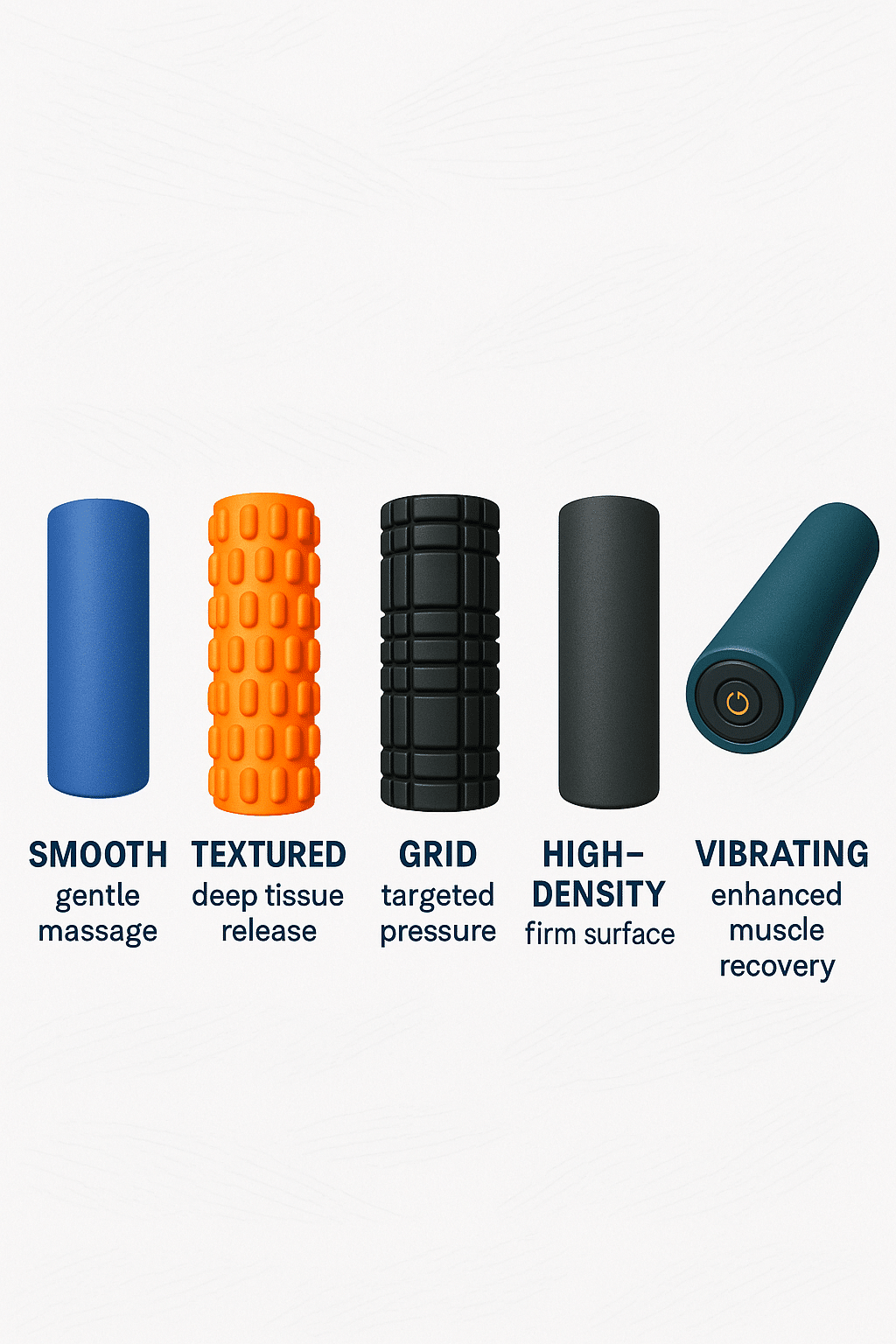
Causes of Muscle Soreness after Exercise
Muscle soreness, especially the kind that hits us a day or two post-workout, is scientifically called Delayed Onset Muscle Soreness (DOMS). It’s basically your muscles’ way of telling you they’ve been worked hard and are repairing themselves. DOMS typically occurs after eccentric exercise—when muscles lengthen under tension, like lowering weights or running downhill.
Microscopic tears happen in muscle fibers during intense physical activity. These tiny injuries cause inflammation, swelling, and the characteristic stiffness and soreness we experience. Muscle soreness can also be due to accumulated metabolic waste from strenuous activity or muscle fatigue. It’s a natural part of the adaptation process that leads to stronger muscles.
Understanding this helps us realize why recovery techniques such as foam rolling are so crucial—not just to numb the pain but to actively promote healing and reduce inflammation.
How Foam Rolling Supports Muscle Recovery and Reduces Inflammation
Foam rolling is a form of self-myofascial release (SMR). When you roll your muscles out on a foam roller, you’re essentially using your own body weight to press into muscle tissue and fascia (the connective tissue surrounding muscles). This pressure helps relax contracted muscles, improve blood flow, and increase lymphatic drainage.
Enhanced circulation means more oxygen and nutrients reach your muscles, speeding up repair and reducing inflammation. Moreover, foam rolling can break down scar tissue and adhesions within the fascia, reducing muscle stiffness and improving mobility.
Multiple studies support foam rolling’s role in reducing muscle soreness post-exercise. For instance, research shows that 10-20 minutes of foam rolling after workouts can significantly decrease DOMS and restore normal muscle function faster.
The Science Behind Myofascial Release and Trigger Point Therapy
Myofascial release targets tight spots or “trigger points” within the fascia that cause discomfort and limit range of motion. These trigger points feel like knots and result from repetitive strain, poor posture, or acute injury.
Applying sustained pressure through foam rolling helps stretch and elongate the fascia, releasing tension in those trigger points. This process stimulates mechanoreceptors that influence the nervous system to reduce pain signals and promote relaxation.
The wave texture of advanced rollers like the TheraGun Wave Roller mimics the hands of a skilled massage therapist by adjusting pressure dynamically—making self-treatment more effective. Incorporating trigger point therapy with foam rolling empowers you to tackle tight muscles proactively, preventing stiffness and injury.
Key Benefits of Using Foam Rollers for Sore Muscles
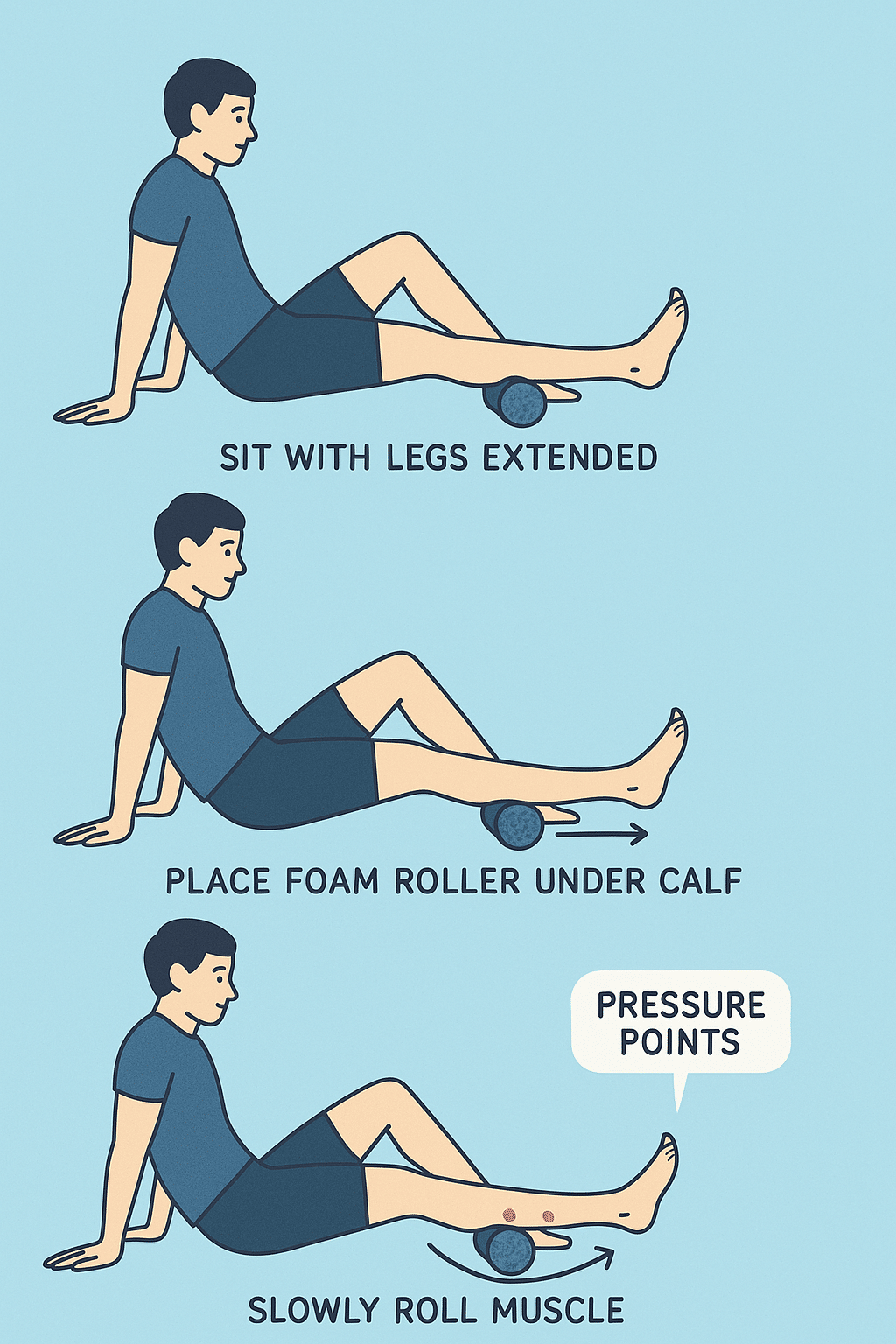
Enhancing Muscle Relaxation and Reducing Muscle Tightness
One of the standout benefits I experienced using foam rollers is the immediate release of tension in tight muscle groups. Foam rolling relaxes muscle fibers and fascia, reducing hypertonicity (excess muscle tension) that often causes discomfort and restricted movement.
For example, after a long run or heavy weightlifting session, rolling your calves, quads, or back can ease that stubborn tightness. The gentle compression flushes out metabolic waste while triggering the nervous system to calm the muscles, leaving you feeling looser and more comfortable.
Improving Range of Motion and Flexibility
Tight muscles restrict your range of motion, which can impair performance and increase injury risk. Foam rolling helps lengthen muscle fibers and reduce adhesions, directly improving flexibility.
Numerous athletes report greater joint mobility and ease in movement after regularly incorporating foam rolling into their routines. By enhancing your range of motion, you set yourself up for better technique and more efficient workouts.
For instance, foam rolling your hip flexors and glutes can unlock movement limitations that tight muscles impose on squatting or lunging motions, making your workout both safer and more effective.
Accelerating Recovery and Decreasing Delayed Onset Muscle Soreness (DOMS)
Recovery is king when it comes to fitness progress, and foam rolling is a powerful recovery aid. Using a foam roller post-workout helps reduce DOMS by increasing blood flow to damaged areas and decreasing inflammation.
Unlike passive recovery methods, foam rolling actively engages your muscles and fascia, promoting quicker tissue repair. Many elite athletes use vibrating foam rollers or those with deeper textures for an even greater recovery boost—as the vibration increases circulation more intensively.
By regularly foam rolling, you can lessen the downtime between training sessions, maintain muscle health, and consistently progress towards your fitness goals.
How to Use Foam Rollers for Muscle Soreness Effectively
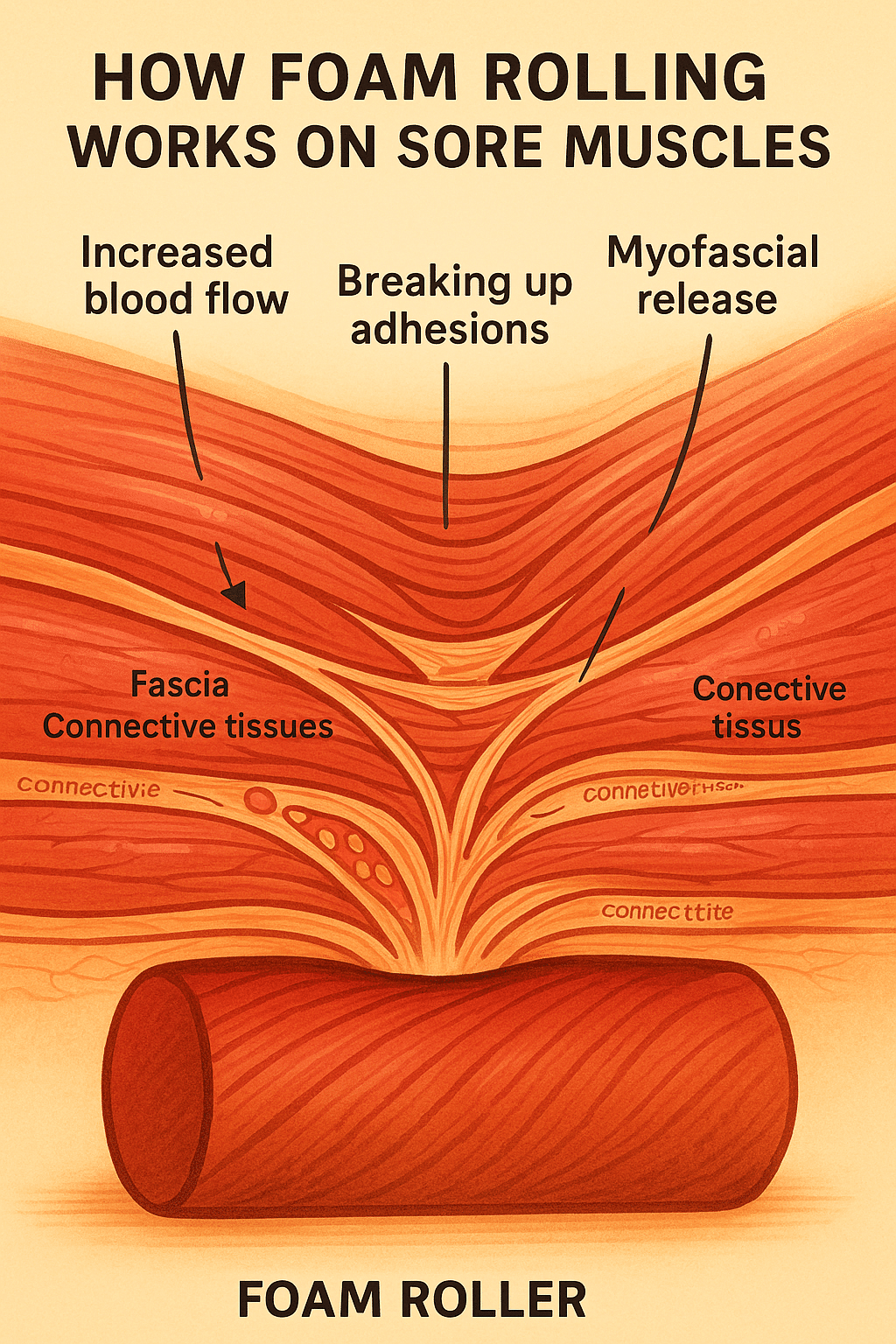
Foam Rolling Techniques for Targeted Muscle Relief
Effective foam rolling isn’t just about lying on the roller and moving randomly. To get the best results for sore muscles, you want a focused approach—target areas where soreness or tightness is most severe.
Start by slowly rolling over the muscle group, pausing on tender spots (trigger points) for 20-30 seconds to allow the tissue to release. The idea is to apply enough pressure to feel discomfort but not sharp pain.
Common muscle groups to target include calves, IT band, hamstrings, quadriceps, lower back, and shoulders. Spend 1-2 minutes on each muscle group for a total session of about 15-20 minutes.
Rolling Duration, Pressure, and Frequency Guidelines
- Duration: Spend 1-2 minutes per muscle group. Longer than that can overstimulate tissues.
- Pressure: Use your body weight gradually. If it’s too intense, support some weight with your hands or feet.
- Frequency: For sore muscles, roll once daily post-workout or on rest days. Maintenance foam rolling can be done 3-4 times per week.
Avoiding Common Mistakes and Understanding Safety Precautions
Using foam rollers improperly can cause discomfort or worsen existing issues. Key mistakes to avoid:
- Rolling too fast: Slow, controlled movements allow muscle tissues to adapt.
- Using excessive pressure: Avoid sharp pain or bruising by moderating your body weight.
- Rolling sensitive areas: Avoid rolling over joints, bones, or inflamed injuries.
- Overdoing it: More isn’t always better—limit sessions to prevent inflammation.
If discomfort persists or worsens, consult a physical therapist or healthcare professional before continuing.
Foam Roller Exercises for Tight Muscles: Step-by-Step Instructions
Here are simple, effective foam roller exercises tailored for common sore muscle groups:
- Calves: Sit with legs extended, place roller under calves, and slowly roll from ankle to knee. Pause on tender spots.
- Quadriceps: Lie face down, roller under thighs, roll from hips to knees, supporting weight with forearms.
- IT Band: Lie on your side, roller under the outer thigh, roll from hip to just above the knee.
- Upper Back: Lie with roller beneath shoulders, clasp hands behind head, and gently move up and down along the upper back.
- Glutes: Sit on roller, cross one ankle over opposite knee, roll over glute muscles slowly.
Each exercise can be done for 1-2 minutes. Pair them with deep breathing to maximize relaxation.
Choosing the Right Foam Roller: What Fitness Enthusiasts Should Know
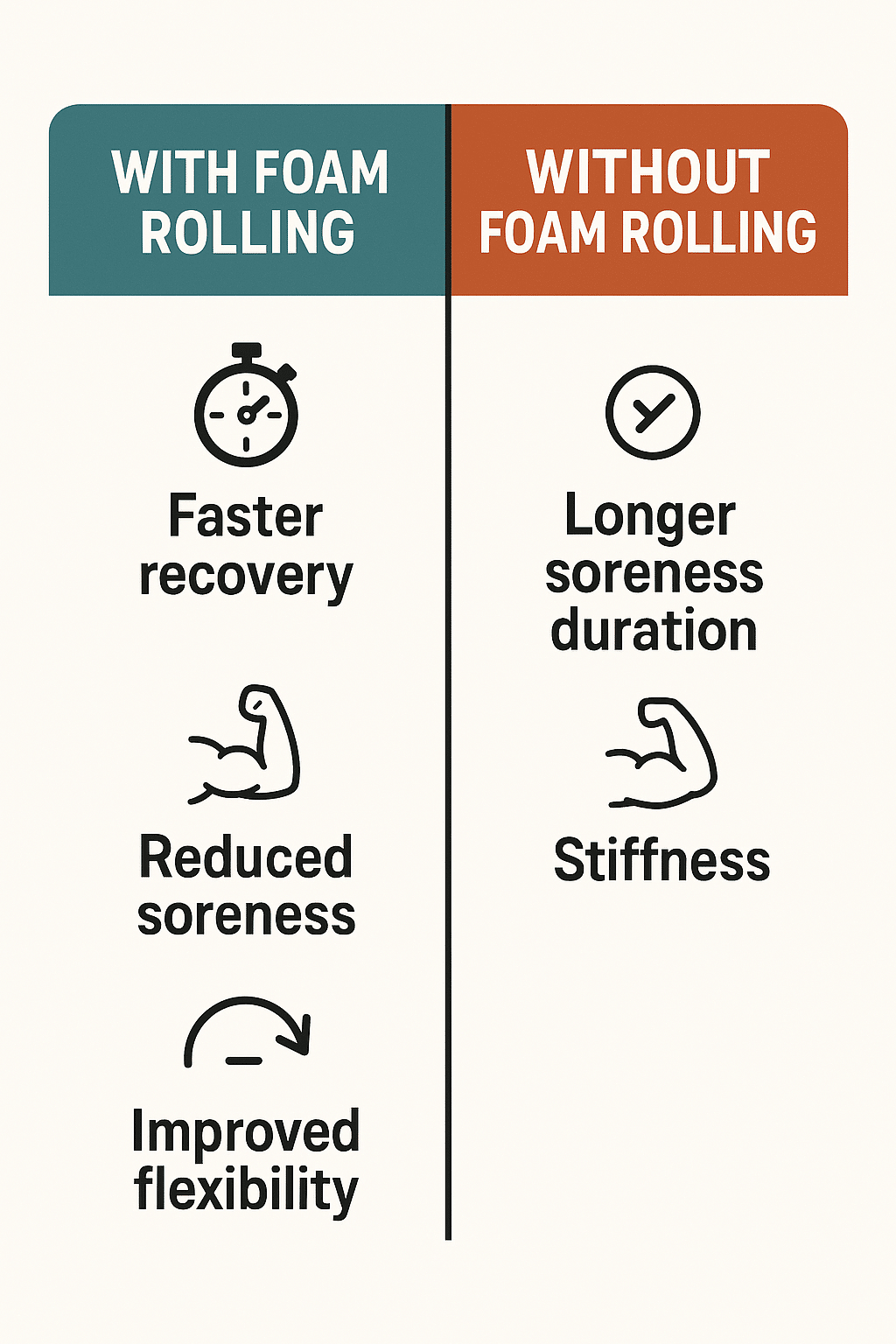
Foam Roller Density and Texture: Soft vs. Firm vs. Textured
Your preferred foam roller’s density and texture largely depend on your soreness level, pain tolerance, and recovery goals.
- Soft Foam Rollers: Ideal for beginners or sensitive muscles. Provide gentle pressure for comfort and relaxation.
- Firm Foam Rollers: Offer deeper, more intense massage to break down knots and tight fascia.
- Textured Foam Rollers: Feature bumps, ridges, or knobs to mimic deep tissue massage or trigger point therapy.
For example, the RumbleRoller Original Textured Foam Roller uses high-profile bumps to deliver targeted pressure on muscle knots, perfect for experienced users seeking deep tissue effects.
Size and Portability Considerations for Workout and Travel Recovery
Foam rollers come in various sizes—from compact 12-inch models to full-length 36-inch rollers.
- Compact Rollers: Great for on-the-go use and travel. Easy to pack in gym bags.
- Full-Length Rollers: Best for full-body workouts and greater coverage.
- Medium Size: Offers a balance of portability and effective surface area.
For frequent travelers or those with limited space, lightweight and portable rollers like the TheraGun Wave Roller, which combines vibration with a compact form, can be a game-changer.
Features to Consider: Vibration, Heated Options, and Smart Connectivity
Modern foam rollers have evolved beyond basic foam:
- Vibration: Rollers like the Hyperice Vyper 3.0 vibrate at different speeds, enhancing blood flow and relaxation through added stimulation.
- Heated Rollers: Some models provide soothing heat to relax muscles deeper—great for chronic stiffness.
- Smart Connectivity: Devices like TheraGun Wave Roller connect to apps via Bluetooth, offering guided routines and intensity control for personalized recovery.
Consider your recovery needs, budget, and how much tech integration you want in a foam roller.
Product Spotlight: 5 Foam Rollers for Sore Muscles
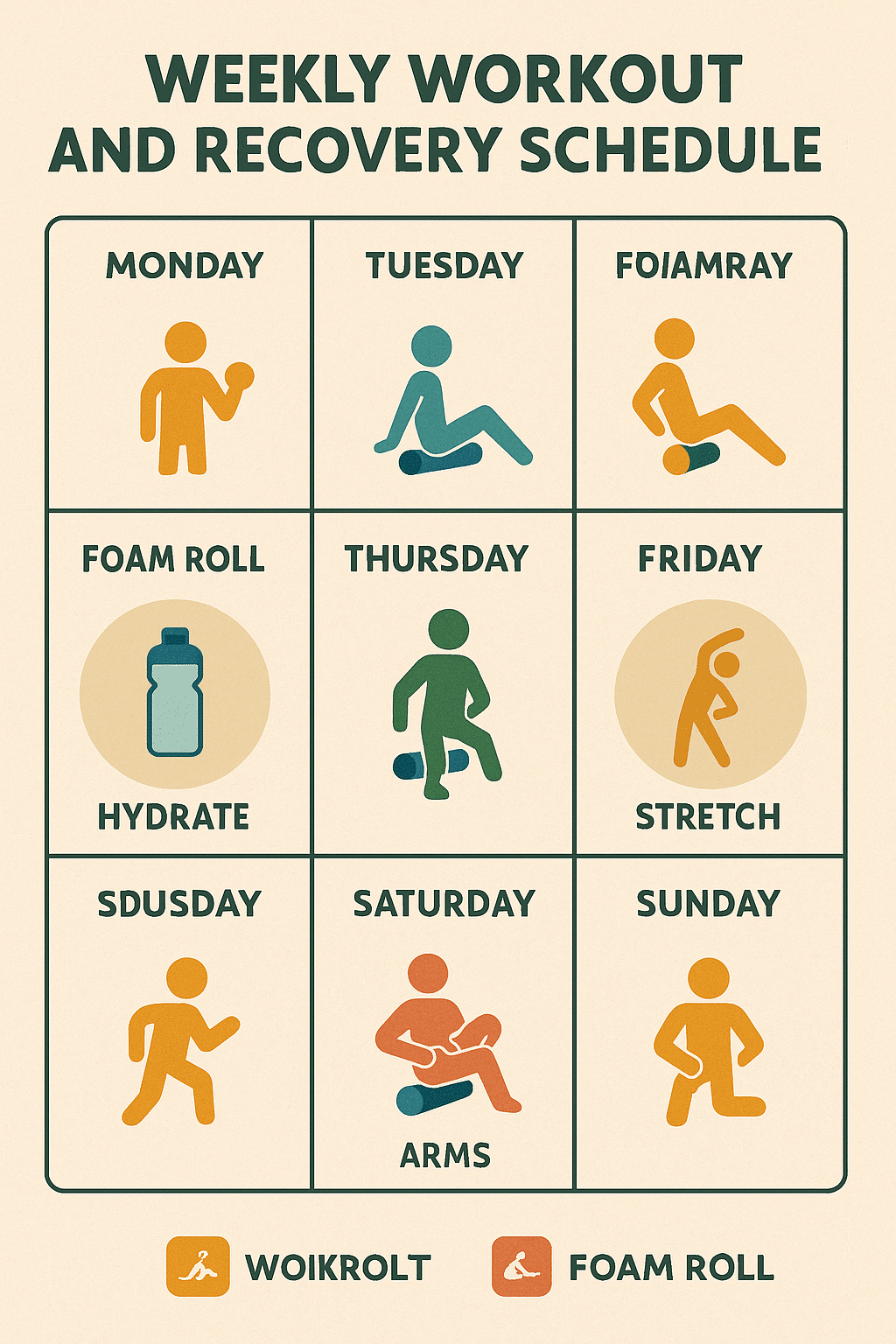
TheraGun Wave Roller – Smart Vibrating Foam Roller with Bluetooth Features
The TheraGun Wave Roller is a standout choice for fitness enthusiasts wanting a blend of innovation and practicality. Its wave-textured surface, combined with five vibration intensity levels, offers both gentle and deep tissue massage options.
- Features: Bluetooth connectivity for app control, rechargeable battery lasting up to 3 hours, hypoallergenic EVA foam.
- Pros: Customizable vibration, soft yet firm texture, portable.
- Ideal For: Athletes looking for a smart recovery tool that delivers focused myofascial release.
- Pricing: Premium pricing reflects advanced technology and build quality.
- Where to Buy: Available on the Therabody official website, Amazon, Target, and Medco Sports Medicine.
RumbleRoller Textured Muscle Foam Roller – Deep Tissue Massage with Unique High-Profile Bumps
The RumbleRoller Original stands apart with its signature high-profile bumps that simulate a massage therapist’s thumbs. Firm yet flexible, it’s designed for athletes who want to tackle deep knots and muscle adhesions.
- Features: Multiple sizes (12”, 22”, 31”), durable construction, deep tissue capability.
- Pros: Highly effective for trigger point therapy, long-lasting.
- Ideal For: Users accustomed to firm pressure seeking intense muscle relief.
- Pricing: Mid-range, with great reviews highlighting durability and efficacy.
- Where to Buy: Found on Amazon, OPTP, Sagewellfit, and Dick’s Sporting Goods.
Hyperice Vyper 3.0 Vibrating Roller – High-Intensity Recovery with App Integration
The Hyperice Vyper 3.0 is a powerful vibrating roller with three speed settings and contoured design to avoid sensitive areas. It pairs perfectly with its app for guided sessions.
- Features: Strong vibration, ergonomic shape, app compatibility.
- Pros: Delivers strong rhythmic pulses, enhances warm-up and recovery.
- Ideal For: Serious athletes and fitness lovers seeking tech-enhanced performance.
- Pricing: On the higher end due to vibration tech and smart features.
- Where to Buy: Official Hyperice store and other selected retailers.
Gaiam Restore Muscle Massage Therapy Foam Roller – Versatile, Semi-Firm with Guided Workouts
The Gaiam Restore Foam Roller offers a semi-firm texture ideal for moderate pressure and is complemented by access to a 15-minute digital guided workout.
- Features: 18-inch length, balanced firmness, instructional workout included.
- Pros: Friendly for all levels, encourages consistency with guided content.
- Ideal For: Beginners to intermediate users wanting a reliable, versatile tool.
- Pricing: Affordable and a great entry point.
- Where to Buy: Gaiam.com, Dick’s Sporting Goods.
OPTP PRO-ROLLER Soft Density Textured Roller – Gentle Compression for Sore Muscles
The OPTP PRO-ROLLER is designed with soft density EVA foam for gentle yet effective compression, perfect for users needing a softer option.
- Features: Multiple sizes, easy maintenance, closed-cell foam for longevity.
- Pros: Comfortable for sensitive muscles, great for physical therapy.
- Ideal For: Rehab patients, yoga practitioners, and anyone new to foam rolling.
- Pricing: Moderate, with professional-grade quality.
- Where to Buy: OPTP official site, Amazon, Target.
Integrating Foam Rolling into Your Fitness Routine for Optimal Results
Pre-Workout Foam Rolling for Injury Prevention and Warm-Up
Using a foam roller before workouts can activate muscles, increase blood flow, and prepare tissues for movement. Warming up this way reduces muscle tightness, lowers injury risk, and primes your nervous system.
Spend 5-10 minutes rolling major muscle groups focusing on areas prone to tightness (e.g., calves, quads, hips). Combine with dynamic stretches for maximum benefit.
Post-Workout Foam Rolling to Reduce Muscle Inflammation and Speed Recovery
After training, foam rolling aids in flushing out metabolic waste and reducing inflammation. This helps reduce DOMS and restores optimal muscle function.
Spend 10-20 minutes on slower, targeted rolling techniques post-exercise. Concentrate on sore or stiff muscles, and pair with hydration and nutrition for full recovery.
Combining Foam Rolling with Other Recovery Techniques like Stretching and Hydration
Foam rolling is a great standalone tool but works best in combination with stretching, adequate hydration, and proper rest.
Stretching helps lengthen muscles after rolling, while hydration supports metabolic processes critical for tissue repair.
Integrating these elements creates a holistic recovery protocol that enhances your overall fitness journey.
Advanced Tips: Using Foam Rollers to Enhance Long-Term Muscle Health and Performance
Incorporating Vibration and Heat for Deeper Muscle Relaxation
Adding vibration or heat to foam rolling sessions can unlock deeper tissue layers by enhancing blood flow and nerve relaxation.
Devices like the TheraGun Wave Roller and Hyperice Vyper 3 provide vibration therapy that stimulates muscles intensely without added effort.
While heated rollers are less common, warming up muscles before rolling can reduce discomfort and increase pliability.
Managing Chronic Muscle Stiffness and Fascia Restrictions
Chronic stiffness often relates to fascia restrictions hardened over time. Consistent foam rolling combined with stretching and mobility exercises can gradually soften fascia, improving comfort and movement.
For stubborn areas, targeted trigger point therapy using textured rollers like the RumbleRoller is highly effective.
Consulting a physical therapist for personalized guidance is advised when dealing with chronic issues.
Tracking Recovery Progress and Adjusting Foam Rolling Routines
Keep a recovery journal or app to monitor soreness levels, mobility gains, and performance improvements. Adjust your foam rolling intensity, duration, or choice of roller based on feedback.
Adding variety with different densities and textures can prevent adaptation and maintain benefits over the long haul.
What to Expect: Real User Experiences and Common FAQs about Foam Rollers for Sore Muscles
Testimonials Highlighting Effectiveness and Usability
Users commonly report noticeable reductions in soreness and muscle tightness after foam rolling. One RumbleRoller user shared, “I tried it at my gym, and I loved it. It really helps release those tight muscle spots.”
Many appreciate vibrational rollers for the convenience of combining massage effects with self-myofascial release.
Addressing Concerns: Discomfort, Bruising, and When to See a Professional
Foam rolling can cause some initial discomfort, especially on tight or sensitive areas, but it should not cause intense pain or bruising. If you experience prolonged pain, swelling, or numbness, that’s a sign to stop and consult a healthcare provider.
Avoid rolling over injuries with open wounds, fractures, or severe inflammation without professional advice.
Conclusion: Elevate Your Recovery Strategy with These 5 Foam Rollers
Taking your recovery seriously is key to maximizing fitness results, and foam rollers for sore muscles are indispensable tools for any athlete or workout enthusiast. From the smart vibration and Bluetooth features of the TheraGun Wave Roller to the deep tissue precision of the RumbleRoller, the products highlighted here offer solutions for every intensity level and preference.
By understanding how foam rolling supports muscle health, learning effective techniques, and integrating it mindfully into your routine, you not only reduce soreness but also improve flexibility, performance, and injury resilience. Make it a priority to select the foam roller that fits your needs—consider density, texture, portability, and tech features—and commit to consistent use.
I encourage you to explore these foam rollers and experience firsthand how they enhance your recovery. Your muscles will thank you, and your fitness journey will flourish with less downtime and more power. Ready to roll your way to better muscle health? Get started today!
FAQs about Foam Rollers for Sore Muscles
Q1: What is the best foam roller for sore muscles?
A1: The best foam roller depends on your needs. For deep tissue relief, the RumbleRoller with textured bumps is ideal, while the TheraGun Wave Roller combines vibration and adaptability for smart recovery. Beginners may prefer softer rollers like the Gaiam Restore or OPTP PRO-ROLLER.
Q2: How often should I use foam rollers for sore muscles?
A2: For sore muscles, daily use post-workout or every other day is effective. Regular maintenance rolling 3-4 times a week helps prevent stiffness and promotes flexibility.
Q3: Can foam rolling reduce delayed onset muscle soreness (DOMS)?
A3: Yes, studies indicate foam rolling after workouts can significantly reduce DOMS by improving circulation, flushing metabolic waste, and relaxing tight fascia.
Q4: Is vibration foam rolling better for muscle recovery?
A4: Vibration adds an extra layer of stimulation, enhancing blood flow and relaxation. Devices like the Hyperice Vyper 3 and TheraGun Wave Roller offer adjustable vibration to suit intensity preferences, making them superior for enhanced recovery.
Q5: Are there any risks when using foam rollers for sore muscles?
A5: When used correctly, foam rolling is safe. Avoid rolling over bones, joints, or injuries, and do not apply excessive pressure that causes sharp pain. If discomfort persists, see a healthcare professional before continuing.
Quick Takeaways / Key Points
- Foam rollers are essential tools for muscle recovery, flexibility, and soreness reduction.
- Myofascial release via foam rolling improves circulation, reduces inflammation, and eases trigger points.
- Choose foam roller density and texture based on pain tolerance and recovery goals.
- Vibrating rollers like TheraGun Wave and Hyperice Vyper offer advanced therapy options.
- Use foam rollers pre- and post-workout to prevent injury and accelerate healing.
- Proper technique and safety precautions are vital for effective and pain-free foam rolling.
- Track your recovery and adjust your foam rolling routine for long-term muscle health.
For more information about these products, you can visit their official sites:
– TheraGun Wave Roller
– RumbleRoller
– Hyperice Vyper 3
– Gaiam Restore Foam Roller
– OPTP PRO-ROLLER
Start integrating foam rolling today, and watch your muscle recovery soar!

